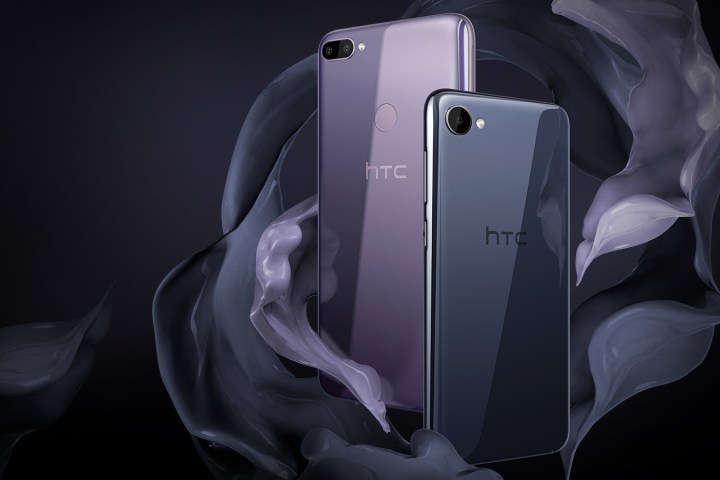
HTC has announced two new additions to its budget range, revealing the HTC Desire 12 and the HTC Desire 12 Plus.
There’s a lot to be interested about with these two models, not least the fact that they both embrace the bezel-less philosophy that’s oh so 2018. While they’re not as bezel-free as the iPhone X or the Galaxy S9, both have 18:9 full-screen displays, HTC Sense Assistant, and Android 8.0 Oreo right out of the gate, giving you a lot of phone for your money. Here’s the lowdown on each of these two new budget beauties.
HTC Desire 12

The HTC Desire 12 is the smaller of the two phones, but it’s still pretty beefy. It uses a 5.5-inch IPS LCD display running a 1440 x 720 resolution that’s not the sharpest we’ve seen, but should be sufficient for the price point. It’s powered by a Mediatek MT6739 that, while not the most powerful budget chip around, should be sufficient to keep the phone running everyday tasks smoothly. Buyers have the choice of two models — one with 2GB of RAM and 16GB of storage, or another with 3GB of RAM and 32GB of storage. Storage shouldn’t be too much of an issue whichever you pick, since both models have a MicroSD card slot that can expand your available storage by up to 2TB.
You’ll find a 5-megapixel lens around the front of the phone, while the back houses a 13MP camera that looks good enough to get some decent snaps. It’s all wrapped up in shimmery acrylic, similar to the HTC U11 Life.
HTC Desire 12 Plus

As you might expect from the name, the Desire 12 Plus is the larger of the two, sporting a 6-inch IPS LCD, but still running the same 1440 x 720 resolution. It’s also received a more powerful processor than its smaller sibling with the Snapdragon 450, as well as 3GB of RAM, 32GB of storage, and a MicroSD card slot.
Around the front you’ll find an 8MP selfie-snapper, but the back houses a dual-camera setup, with a 13MP lens paired with a 2MP lens to provide the “bokeh” DSLR-style effect we’ve come to love. We’re looking forward to seeing what this budget camera has going for it. The Desire 12 Plus is wrapped in the same acrylic as the Desire 12, and if it’s as good an effect as on the HTC U11 Life then we look forward to seeing it in action.
Editors' Recommendations
- OnePlus just did something unexpected with the OnePlus 12R
- There’s already something wrong with the OnePlus 12
- The OnePlus 12 may fix one of the OnePlus 11’s biggest mistakes
- The OnePlus 12 just leaked again, and it sounds incredible
- Is this our first look at the OnePlus 12?


